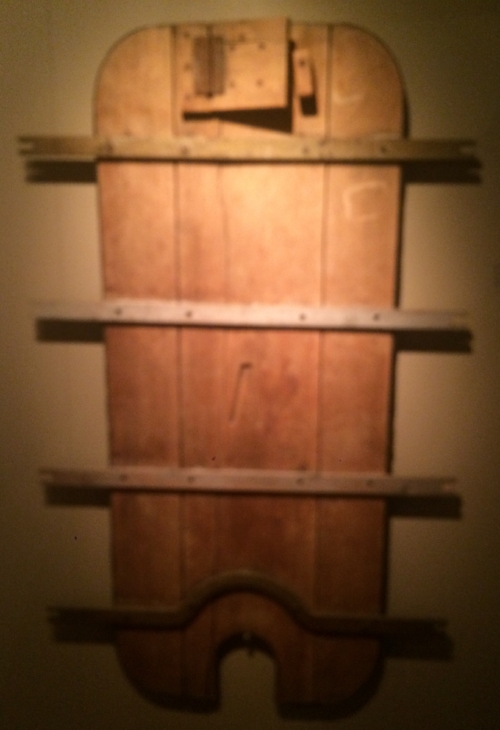Dr. Jozef Guislain (1797-1860) is an important figure in the history of the modern clinic. Together with P. J. Triest and other among the Brothers of Charity he is to be credited with initiating the liberation of the mentally ill left to languish in the madhouse of Ghent, the crypt of the infamous Gerard the Devil's Castle, one of the first such asylums in Europe and the first in Western Europe, in use from as early as the 16th century. In 1828 Guislain and his colleagues decided to transfer the patients imprisoned in the madhouse to the Alexian convent of the brothers of charity, marking the beginning of a new chapter in the history of the modern clinic.
Jozef Guislain
A recent publication authored by the current director of the museum, R. Stockman (200 Years of Breaking the Chains, 2015) offers an illustration of this history to celebrate the second centenary of the 'liberation' of mental patients.
The museum that takes its name from Dr. Guislain is situated in the old Guislain Hospice, the first Belgian mental hospital. The collection originated in the early 1980s, when René Stockman, still today the museum’s curator and Superior General of the Brothers of Charity, worked as general director of the Dr. Guislain Psychiatric Centre. It was his decision to valorise the site of the Guislain Hospital and the old objects pertinent to the care of the mentally ill by organising a display open to the public. The resulting permanent exhibition is one of the biggest and richest in Europe, comprising objects belonging to the genre of patient history, items illustrating methods, doctrines and practices of psychiatric care (from pharmacology to various technology, to instruments of coercion); pictures and photos; literature and propaganda illustrating various phases in history of psychiatry, from those of advancement to its many dark periods; art objects (including a great art brut collection); items of hospital furniture and machinery.
Reconstruction of psychiatric ward
Tools and instruments from the history of the psychiatric clinic
Insuline coma induced as possible cure for mental disorders, following the studies of the Austrian physician Manfred Sakel (1922)
Lobotomy consists in the cutting of the connections between both halves of the brain. The image shows the technique developed in 1946 Walter Freeman, a surgical method practiced via the eye socket.
Electro shock: practice and theory
Breath, life and soul? Artistic assemblage of different animals' bronchial tubes (A. Williams Wynn, 2017, Resin corrosion casts)
From the installation by A. Williams Wynn, 2017, Resin corrosion casts
From the installation by A. Williams Wynn, 2017, Resin corrosion casts
Dementia and loss of memory. Photographic work by Evy Raes, 'Alzheimer Code Project', to illustrate the struggle with everyday reality experienced by people with early dementia.
Darkest chapter in the history of modern psychiatry. A propaganda poster about euthanasia of the 'mentally ill' or 'mentally disabled' during the third reich
Coercion
Images from the ward
Board for bathing therapy
Deterministic approaches to human mental life and the evaluation of mental capacities: phrenology (the allocation of faculties to different areas of the brain and regions of the skull); physiognomy (the ethical interpretation of bodily features, especially facial); anthropometry (the measurement and interpretation of bodily features and proportions):
Phrenology
Phrenology
Phrenology
'Anthropometry'
Coercive soothing - the padded bed-cage
Swinging as soothing method
Means of coercion
Coercion: shackles and chains used before 1815 at the Gerard the Devil's Castle (Ghent)to restrain the mentally ill



























